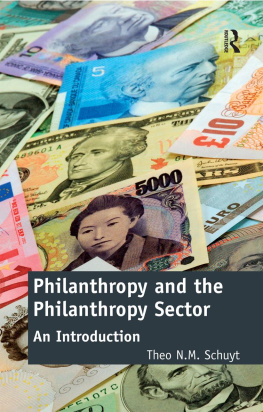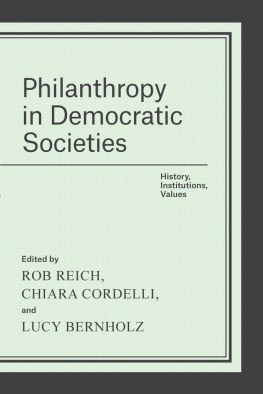First published 2013 by Ashgate Publishing
Published 2016 by Routledge
2 Park Square, Milton Park, Abingdon, Oxon OX14 4RN
711 Third Avenue, New York, NY 10017
Routledge is an imprint of the Taylor & Francis Group, an informa business Copyright Theo N.M. Schuyt 2013
Copyright Theo N.M. Schuyt 2013
Theo N.M. Schuyt has asserted his moral right under the Copyright, Designs and Patents Act, 1988, to be identified as the author of this work.
All rights reserved. No part of this book may be reprinted or reproduced or utilised in any form or by any electronic, mechanical, or other means, now known or hereafter invented, including photocopying and recording, or in any information storage or retrieval system, without permission in writing from the publishers.
Notice:
Product or corporate names may be trademarks or registered trademarks, and are used only for identification and explanation without intent to infringe.
British Library Cataloguing in Publication Data
A catalogue record for this book is available from the British Library
The Library of Congress has cataloged the printed edition as follows:
Schuyt, Theo, 1949
Philanthropy and the philanthropy sector : an introduction / by Theo N.M. Schuyt.
pages cm
Includes bibliographical references and index.
ISBN 978-1-4724-1280-5 (hardback : alk. paper) -- ISBN 978-1-4724- 1281-2 (ebook) -- ISBN 978-1-4724-1282-9 (epub) 1. Charities. I. Title.
HV40.S3943 2013 361.7--dc23
2013009604
ISBN: 978-1-4724-1280-5 (pbk)
Whats the main drive for writing this book? Id like to make the underlying motive and the aim of this book clear from the very start. in europe, but also elsewhere in the world, philanthropy is attracting increasing attention. Citizens, foundations and companies are working voluntarily for all kinds of social goals. commitment is a hot topic: people want to make a difference, including doing work to promote the public good.
Welfare states in Western europe are in transition. Problems in the financial sector, economic stagnation, demographic changes, and cultural and political developments at national as well as european level are triggering fundamental changes in economic, social and political institutions. This state of flux is forcing governments, businesses and civil groups to be constantly innovative in their efforts to ensure that Western europe remains a prosperous and democratic community in which to live.
in this context, its astonishing that most discussions about the future of western european welfare states usually concern just two alternatives: the government and the market. Presented with this simplistic choice, we must ask the question: isnt there more to the welfare state debate than just the roles of government and the market? Isnt philanthropy also a social mechanism that can create solidarity?
For many years, government policies and expanding welfare states have taken centre stage, while philanthropy has been sidelined, at national and european level. Philanthropy is not visible. Current reality shows us that practice is racing ahead of politics, policy makers and the academic world. community and family foundations are on the rise, fundraising is everywhere, and citizens and corporations are taking on more responsibility, but these grass roots developments seem to be going unnoticed by governments.
Belief in the almighty state is being defended with tremendous tenacity, despite the fact that the state is showing itself to be an ever more unreliable employer and financier. A new perspective for welfare services, and for other collective facilities, can be created if we begin with two thoughts: 1) the state and collective solidarity are not identical, and 2) collective solidarity does exist outside government.
This book has been written because serious thought must be given to the conditions necessary for philanthropy to re-emerge in Europe. Why is this the case? Philanthropy is a forgotten asset in Europe; its potential has been underestimated.
As a consequence, there is no national macro-economic data available on philanthropic contributions by households, individuals (bequests), foundations, corporations and charity lotteries. Only the Netherlands has conducted this kind of research, collecting such data since 1995. The Netherlands is a frontrunner in this respect and, as a result, this book contains a lot of Dutch data and literature.
TO bring philanthropy back into the spotlight in Europe, VU University Amsterdam, center for Philanthropic studies launched the European Research Network on Philanthropy (ERNOP) at the end of 2007. The stated aim was to advance, coordinate and promote excellence in philanthropic research (see: www.ernop.eu). For that reason, too, VU University Amsterdam has been trying - for many years - to launch a Giving Europe Research project, including national overall estimations of philanthropic contributions in the 27 EU states.
Against the background of an unfavourable and restrictive political environment, this book tries to offer a roadmap for the re- coming of age of modern philanthropy in Europe, stressing three necessary steps to take:
First: the Philanthropy Sector has to develop as an independent sector. Philanthropy and philanthropic organizations are a part of European history, but because they have been neglected for years, and have also insisted on their freedom to operate, they havent focused on developing their own sector. The quality of organization in philanthropy is still in its infancy.
What does organization sociology say about this process of emancipation? What stages do organizations have to go through to be able to present a coherent and collective front? a distinction is made between a Philanthropy Sector and philanthropy as income source for non-profit organizations.
Second: in orderto achieve a Philanthropy Sector , philanthropy has to professionalize. To do this, it urgently needs help from the scientific community, because scientific research and teaching are a conditio sine qua non if a social sector wants to gain prestige. discusses the need for a distinct science of philanthropy. Chapters 4 and 5 attempt to outline the beginnings of such an academic discipline.









